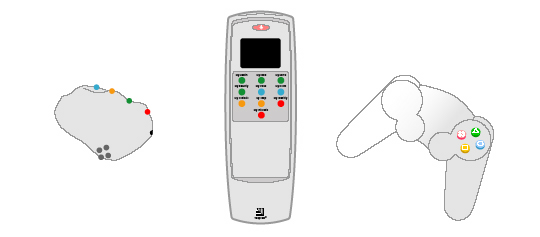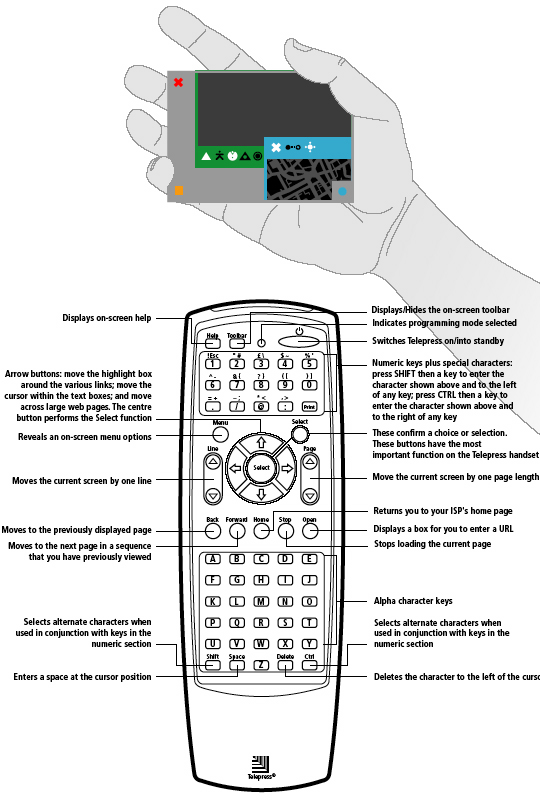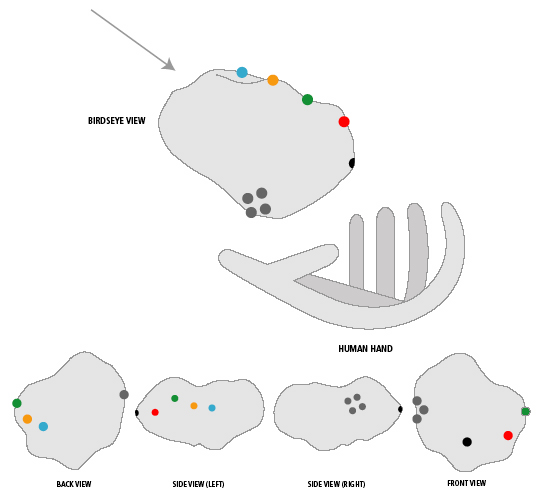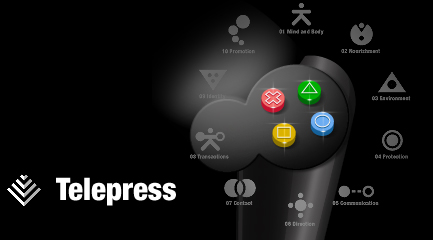| |
|
 |
| TV
Remote Control |
The
term "interactive television" is used to refer to a variety
of rather different kinds of interactivity (both as to usage and as
to technology), and this can lead to considerable misunderstanding.
At least three very different levels are important:
Interactivity with a TV set
The simplest, Interactivity with a TV set is the one that is already
very successful. This got its first big jump with the use of the remote
control to enable channel surfing behaviors, and has evolved to include
video-on-demand, VCR-like pause, rewind, and fast forward, and DVRs,
commercial skipping and the like. It does not change any content or
its inherent linearity, only how we control the viewing of that content.
This is a kind of interactive TV, and not insignificant, but it is
not what is meant in any full sense of the term
Interactivity with TV program content
In its deepest sense, Interactivity with TV program content is the
one that is "interactive TV", but it is also the most challenging
to produce. This is the idea that the program, itself, might change
based on viewer input. Advanced forms, which still have uncertain
prospect for becoming mainstream, include dramas where viewers get
to choose plot details and endings. Simpler forms, which are enjoying
some success, include programs that directly incorporate polls, questions,
comments, and other forms of (virtual) audience response back into
the show. There is much debate as to how effective and popular this
kind of truly interactive TV can be. It seems likely that some forms
of it will be popular, but that viewing of pre-defined content, with
a scripted narrative arc, will remain a major part of the TV experience
indefinitely.
Interactivity with content that is related
to what is on TV
The least understood, Interactivity with TV related content or "coactivity",
may have most promise to radically alter how we watch TV over the
next decade. Examples include getting more information about what
is on the TV, whether sports, movies, news, or the like. Similar (and
most likely to pay the bills), is getting more information about what
is being advertised, along with the ability to buy it - a coactive
form of e-commerce. Partial steps in this direction are already becoming
a mass phenomenon, as Web sites and mobile phone service coordinate
with TV programs. This kind of multitasking is already happening on
large scale, in user-initiated media multitasking but there is currently
little or no automated support for relating that secondary interaction
to what is on the TV.
Many think of interactive TV primarily in terms of "one-screen"
forms that involve interaction on the TV screen, using the remote
control, but there is another significant form of interactive TV that
makes use of "two-screens." In this case, the second screen
may be a PC that is connected to a Web site that is synchronized to
the TV broadcast, but other two-screen forms can involve interaction
with mobile phones or PDAs. Such services are sometimes called "Enhanced
TV" or ETV. Notable two-screen services have been offered for
specific popular programs by many US broadcast TV networks. One-screen
interactive TV generally requires special support in the set-top box,
but two-screen ETV services generally do not, relying instead on Internet
or mobile phone servers to coordinate with the TV. |
 |
|
User
Interaction
Interactive TV is often described as "lean back" interaction,
as users are typically relaxing in the living room environment with
a remote control in one hand. This is in contrast to the personal
computer-oriented "lean forward" experience of a keyboard,
mouse and monitor. In the case of "two-screen" Interactive
TV, however, there may be a mix of "lean-back" and "lean-forward"
interaction. There has been a growing proclivity to media multitasking,
in which multiple media devices are used simultaneously (especially
among younger viewers). This has increased interest in two-screen
services, and is creating a new level of multitasking in interactive
TV known as "coactive TV."
For one-screen services, interactivity is supplied by the manipulation
of the API of the particular software installed on a set-top box,
referred to as 'middleware' due to its intermediary position in
the operating environment. Software programs are broadcast to the
set-top box in a 'carousel'.
On UK DTT (Freeview), in DVB-MHP systems and for OCAP, this is a
DSM-CC Object Carousel.
The set-top box can then load and execute the application. In the
UK this is typically done by a viewer pressing a 'trigger' button
on their remote control (e.g. the red button, as in 'press red').
Red Button is the button on the remote control of the digital
television set top box in the UK. It is for interactive television
services such as BBCi. When interactive programmes are broadcast
a Press Red icon will appear on the television screen.
But what about the Green, Blue & Yellow
Buttons?
Development of applications using these technologies is traditionally
drawn out due to the limitations of the set-top box, the large amount
of testing required and the lack of standardisation of deployed
units. Almost all are proprietary and subject to heavy licensing
restrictions.
Ergonomic
Telepress Remote |
 |
|


